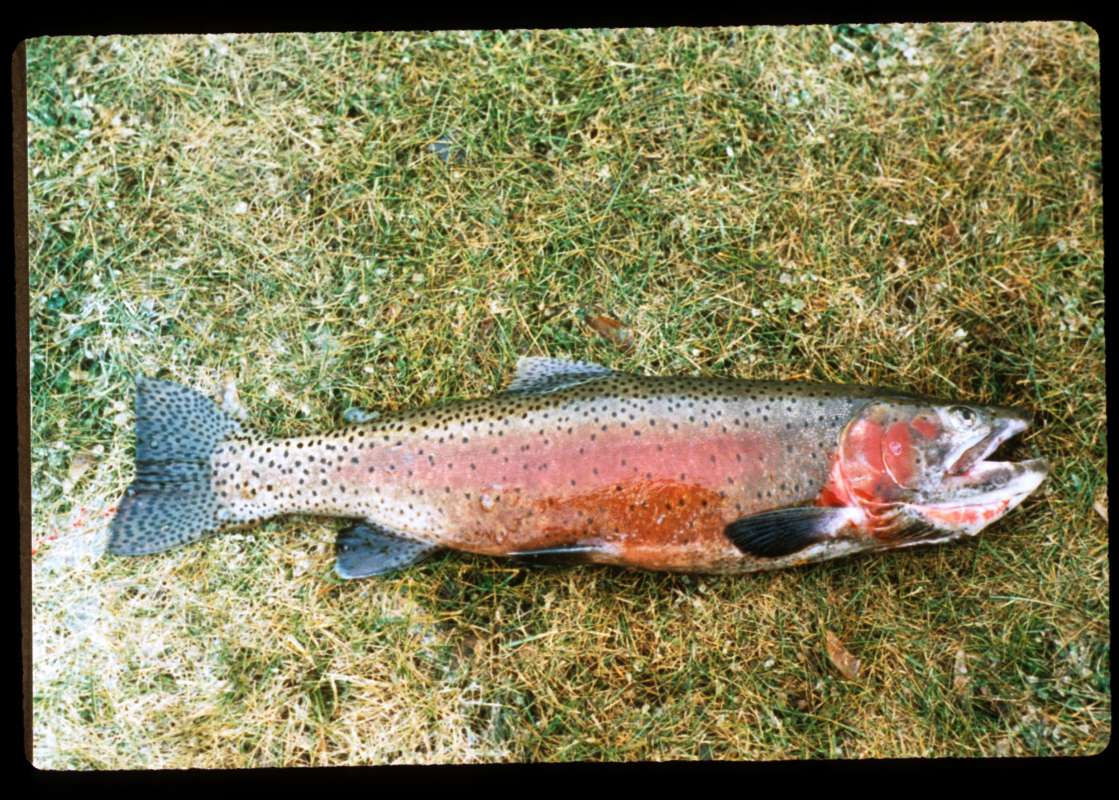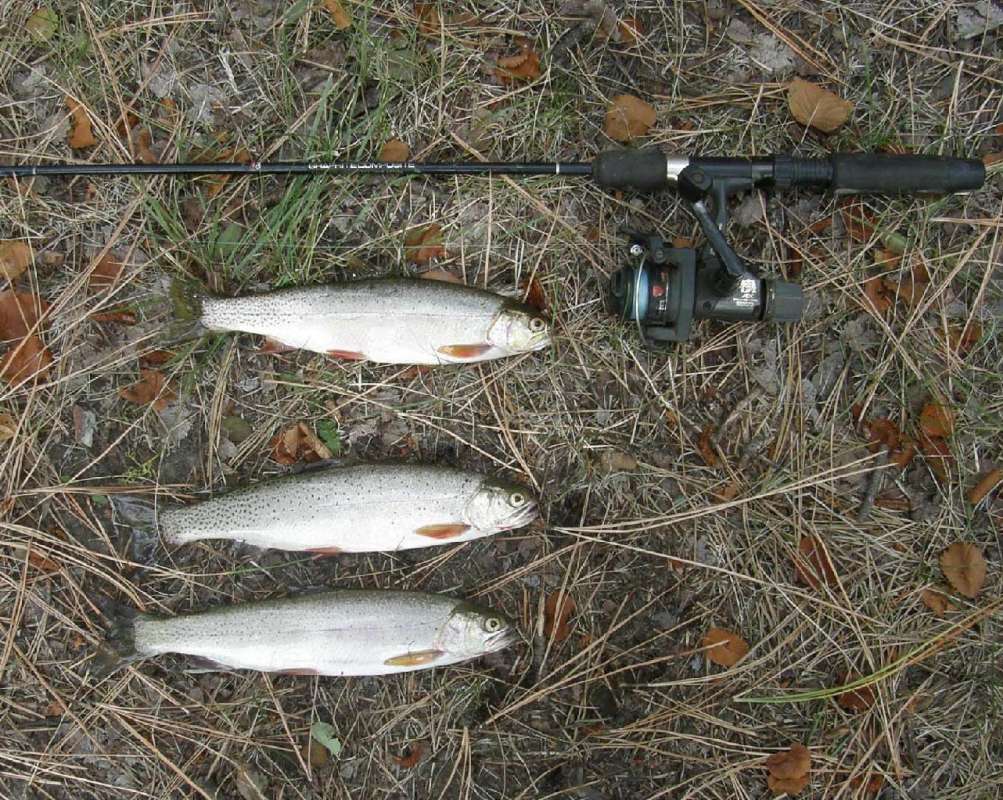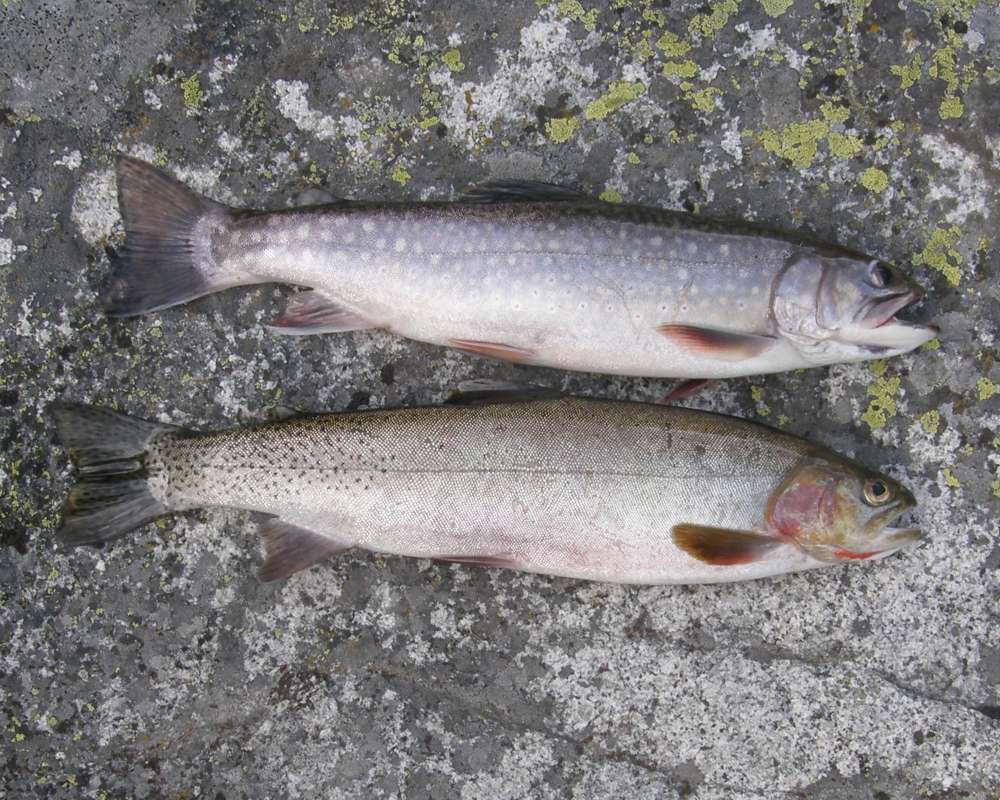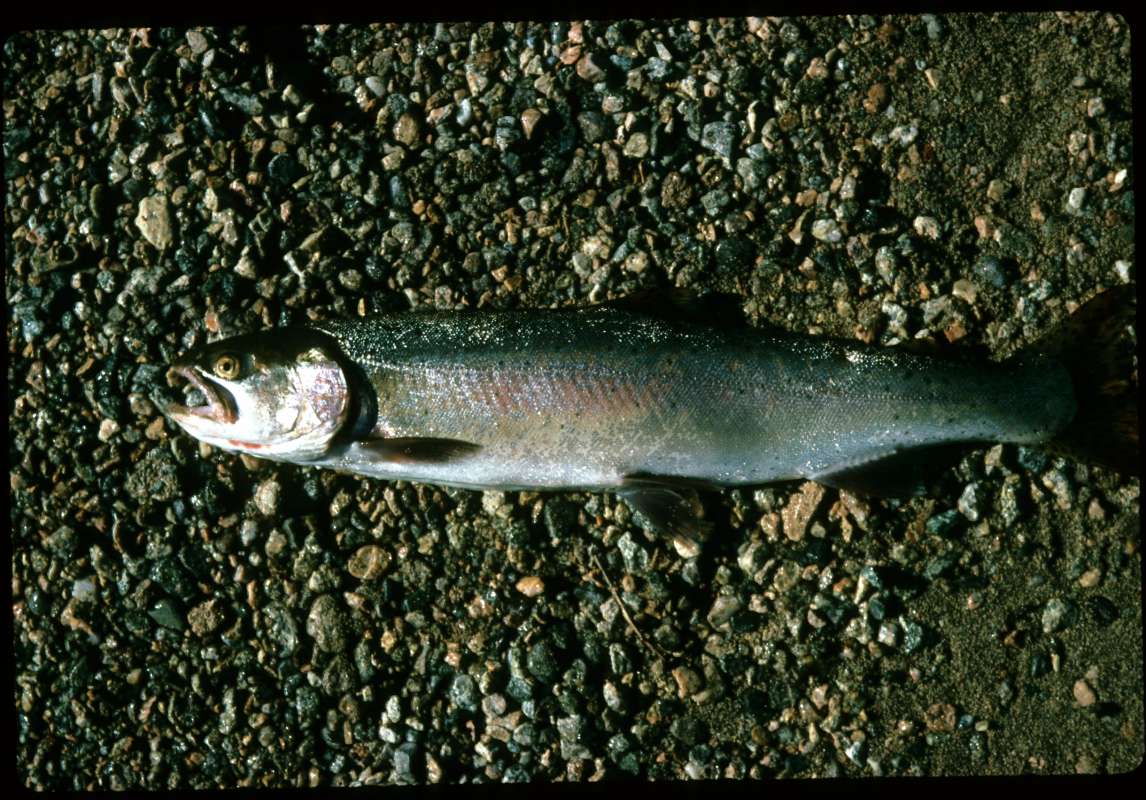SPECIES INFO
Cutthroat trout (Oncorhynchus clarki = Salmo clarki) is found from Alaska south to northern California in Pacific Coast rivers and bays. This species can also be found widely in freshwater locations in North America. This species can grow to about 39 inches in length. The red mark under the jaw helps identify this species. The Lahontan subspecies (ssp henshawi) is protected in Nevada and California.
The Siglers note in their book on Utah fishes that this species is a popular sport fish in Utah. They observe that this is Utah's only native trout, and is present in many colder waters. They also note it is not as common as the rainbow, but note it has been stocked. In Utah the subspecies lahontan is restricted to one or two small streams.Oncorhynchus genus (salmon) contains fish that are commonly called both trout and salmon. This genus is represented by about ten species in North America. Many of the salmon species in this genus live in salt water and breed in fresh water. The trout in this genus generally are limited to fresh water. The Salmo, Salvelinus, and Oncorhynchus genera are closely related. Many of the species in these genera are easily recognizable by their color patterns.
Salmon Family, Salmonidae, is known for the trout and the salmon groups, both of which are considered good sport and table fish. Recently several hybrids have been introduced into the Great Lakes, especially Lake Michigan, with great success as a sport and commercial fish. Salmon and trout are primitive fish and lack bony spines in their fins.
Salmon Group, Order Salmoniformes, is found worldwide in oceans. It is also found in freshwater in many places in North America. A great number of the large game and sport fish are found in this order.
Bony fish, Class Teleostomi, are a class of chordates that include the majority of fish-like animals found on earth. They are characterized by a bony jaw and a bony skeleton. They are found in both fresh and marine waters.
Backboned Animals (Phylum Chordata) are the most advanced group of animals on earth. These animals are characterized by having a spinal cord or backbone. Most members have a clearly defined brain that controls the organism through a spinal cord. Fish, amphibians, reptiles, birds, and mammals are in this phylum.
Currently, some taxonomists believe that the fish should be divided into two groups (sharks and regular fishes) and that there are some other primitive groups in the phylum such as hagfish or lampreys.
Animal Kingdom contains numerous organisms that feed on other animals or plants. Included in the animal kingdom are the lower marine invertebrates such as sponges and corals, the jointed legged animals such as insects and spiders, and the backboned animals such as fish, amphibians, reptiles, birds, and mammals.









